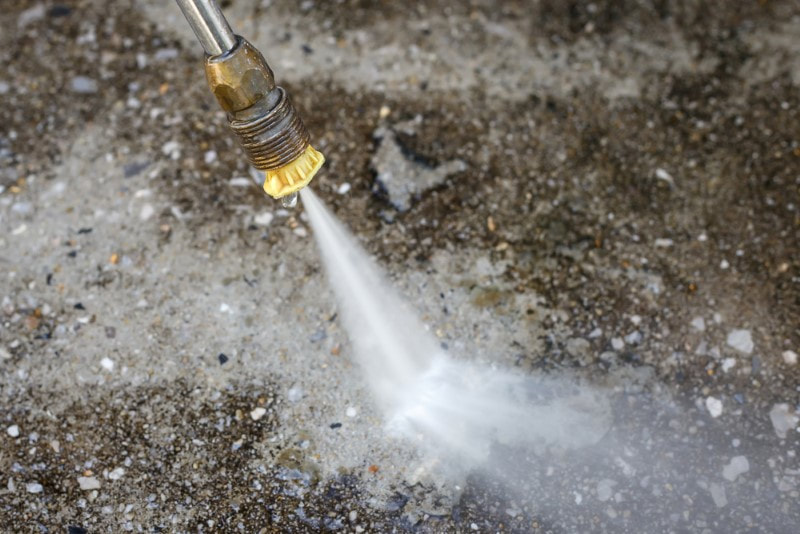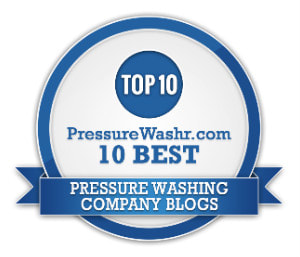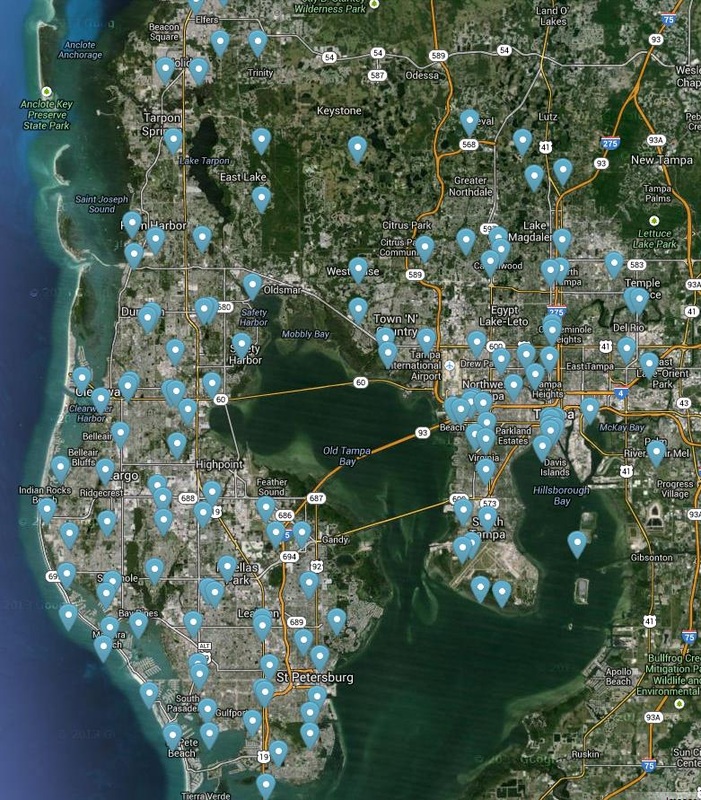|
I promised you last week to continue with tips on how to get rid of mold, mildew, hot tire marks and other contaminants on your concrete driveway and here is my next episode, based on my professional experience and what I learned from the folks on the Concrete Network: 1. How to clean mold and mildew from a concrete driveway Concrete is a porous material and offers perfect breeding conditions for those little microorganisms. Because of our damp and humid Florida weather, we sometimes get issues with mold and mildew growth, especially in shaded areas. If you have a sealed concrete surface it is less likely to see mold or mildew growth and it will be easier to clean. But if you don't, read on ... How does mold look like on a concrete surface? There are different colors of mold, so don’t be confused when you see black spots, green or even white areas. If you live near the coast, the white might just be a salty film on your concrete. Check this by pouring water over the area: If it quickly dissolves, it’s salt. Otherwise, it’s mold. How do you go about cleaning mold from your concrete surface? The best solution is to scrub and clean the affected areas with a mold-killing detergent or a simple solution of household bleach and water (about 1 cup bleach per gallon of water). Scrub the area quite aggressively to get all the mold out of the tiny pores. Note: When working with chemicals, make sure that the run-off is being contained to not damage nearby plants or seep into the groundwater. If you cannot immediately direct the cleaning solution into a nearby sewer, wash off the chemicals after the recommended effective duration with lots of fresh water. Ideally use a pressure washer to take advantage of the strong jet of water for getting even better results. Alternative cleaning: Using White Vinegar You may also use distilled white vinegar for cleaning, which, environmentally speaking, is a good first choice. It can also be effective. However, don’t underestimate the strength of vinegar on any surface: It is an acidic solution and can etch or eat away the top layer of a sealed concrete surface, so always test your cleaners in an inconspicuous spot first, before you work on the main area. Safety tips:
2. How to remove tire marks from your driveway Depending on the type of driveway you have, you might see black tire marks spoiling the looks of your driveway. Those marks are the result of driving or parking a car with hot tires on your concrete driveway, which is a pretty normal occasion in Florida. What creates the black marks is an abrasion of plasticizers from the hot tire which may or may not already have migrated into and discolored the sealer of your concrete driveway. Interestingly, higher quality tires are more liable to leave those marks on your driveway than those of a lower quality. To avoid this situation altogether it is crucial to use the correct sealer for your driveway surface. The correct sealer will form a very dense film that limits or prevents the plasticizer migration. Achieving a good balance of sealer durability and density will make all the difference when sealing driveways and garage floors. (You can read here more about sealer appearance issues.) To get rid of the discoloration, try cleaning the surface with a concrete degreaser and a stiff brush. If the discoloration has migrated into the sealer, you may need to apply a solvent or totally remove the sealer with a chemical stripper. At that point you might want to reach out to a professional who can help you in choosing and applying the correct sealer for your concrete driveway. Ask for a FREE Quote for sealing concrete surfaces. 3. How to remove leaf stains from a driveway Organic stains on concrete driveways from leaves, grass, tree sap, and others can be tough to remove. They typically require special cleaner that don’t affect the concrete color or harm the surface. They work through their enzymes which only target organic material, so there is no problem with etching the surface. To start the cleaning, remove all leaf matter and debris with a broom and a hose or a pressure washer. Then apply the organic detergent to the damp concrete. Let it sit for about 10 to 15 minutes to do its job. After that start scrubbing vigorously with a stiff broom or scrub brush. If this procedure doesn't completely remove the stains, repeat the process. (From: ConcreteNetwork) 4. Some general maintenance tips for your concrete driveway:
5. What to do, if all cleaning fails? If you cannot achieve the desired result with your cleaning efforts, don’t automatically resort to tearing out and replacing your driveway. Check out these repair options for concrete driveways on the Concrete Network to see what else can be done. Looking for a cleaner appearance of your property? Get in touch. We clean outdoor areas regularly and thoroughly. We are experienced and have a large customer base that gave us their genuine feedback which might also convince you to trust us with your business. Call me at (813) 991-7243 for an appointment or get your Free Quote today! Mauricio Munoz & Family DPI Pressure Washing LLC - Owner - Office: (813) 991-7243 Cell: (727) 565-8722 YES! I want to get a FREE Quote right now DPI Pressure Washing has been working with many homeowners, property managers, city representatives, schools, churches etc. throughout the Tampa Bay area for years now. We are known to be able to handle any size of job. Please read our customer testimonials for reference. Source reference: Cleaning a concrete driveway - from the ConcreteNetwork
Comments are closed.
|
Ella May + Luna Marie + Amelie Rose Munoz:We like to help our Dad to promote his pressure washing and window cleaning business in Clearwater and Tampa Bay. Hope you enjoy this blog ;-). Charlotta Munoz + kids
Categories
All
Archives
June 2024
|
Fully Licensed and Insured - Keep your mind at ease while we work for you.
100% Satisfaction Guaranteed - We never let a customer down!
Affordable and Prompt - We don't like to be late, or expensive.
100% Satisfaction Guaranteed - We never let a customer down!
Affordable and Prompt - We don't like to be late, or expensive.
Serving the Tampa Bay area since 1996!





 RSS Feed
RSS Feed






